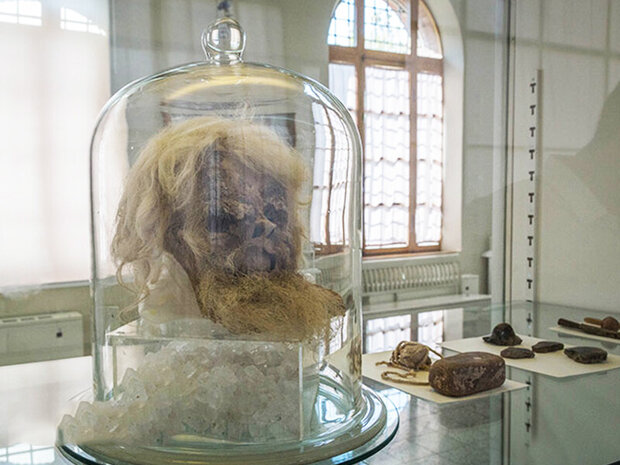

TEHRAN – A new air conditioner system will be installed at Zolfaqari Archaeological Museum, which is globally famed for being home to several magnificent ancient salt mummies and their belongings.
The installation of a Variable Refrigerant Flow (VRF) system is to commence soon based on a memorandum of understanding that Zanjan province’s cultural heritage and tourism directorate has signed with the Ruhr-Universität Bochum, and the Archaeological Museum Frankfurt, provincial tourism chief Amir Arjmand said on Saturday.
“We will no longer worry about keeping and protecting salt men in a stable and ideal condition due to the usage of a central control system and the presence of multiple sensors inside showcases and rooms,” the official explained,” CHTN reported.
“The necessary credit for the installation of the VRF system in the museum is one billion tomans, the entire cost of which will be paid by the University of Bochum,” he added.
Last year, a team of experts from the two countries started a project for purifying, cleansing, and restoring garments and personal belongings of the mummies which were first found in the salt mine in 1993. Furthermore, a joint exhibition of the salt men named “death in salt” was held in Iran and Germany.
What was a catastrophe for the ancient miners has become a sensation for science. Sporting a long white beard, iron knives, and a single gold earring, the first salt mummy was discovered in 1993. He is estimated to be trapped in the mine in ca. 300 CE. In 2004 another mummy was discovered only 50 feet away, followed by another in 2005 and a “teenage” boy mummy later that year.

In 1993, miners in the Douzlakh Salt Mine, near Hamzehli and Chehrabad villages in Zanjan province, accidentally came across a mummified head. The head was very well preserved, to the extent that his pierced ear was still holding the gold earring. The hair, beard, and mustaches were reddish, and his impressive leather boot still contained parts of his leg and foot, according to Ancient History Encyclopedia.
The first mummy, dubbed the “Saltman”, is on display in the National Museum of Iran in Tehran. He still looks very impressive. The third, fourth, and fifth “saltmen” were also carbon dated. The third body was dated and placed in 2337 BP, the fourth body in 2301 BP, and the fifth mummy was dated to 2286 BP, placing them all in the Achaemenid period.
The isotopic analysis of the human remains revealed where these miners were from. Some of them were from the Tehran-Qazvin plain, which is relatively local to the mine’s locality, while others were from north-eastern Iran and the coastal areas around the Caspian Sea, and a few from as far away as Central Asia.
Furthermore, the archaeozoological finds, such as animal bones found within the context of the saltmen, showed that the miners might have eaten sheep, goats, and probably pigs and cattle, as well. The archaeobotanical finds recorded showed different cultivated plants were eaten, indicating an agricultural establishment in the vicinity of the mine.
The wealth of fabric and other organic material (leather) worn by the saltmen have allowed a thorough analysis to be undertaken, detailing the resources used to make the fabrics, the processing, the dyes used to color the fibers of the garments, and not least they offer an excellent overview of the changes in cloth types, patterns of weaving, and the changes of the fibers through time.
Saltman No. 5 had tapeworm eggs from the Taenia sp. genus in his system. These were identified during the study of his remains. The find indicates the consumption of raw or undercooked meat, and this is the first case of this parasite in ancient Iran and the earliest evidence of ancient intestinal parasites in the area. The best preserved and probably the most harrowing of the saltmen is Saltman No. 4. A sixteen-year-old miner, caught in the moment of death, crushed by a cave-in.
AFM
 RSS Feed
RSS Feed















 August 22nd, 2021
August 22nd, 2021  Awake Goy
Awake Goy  Posted in
Posted in  Tags:
Tags: 













